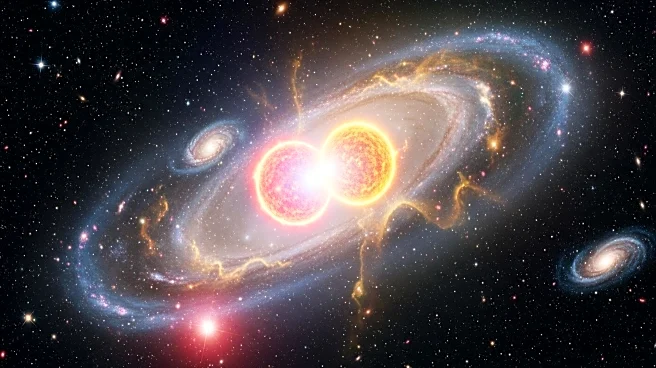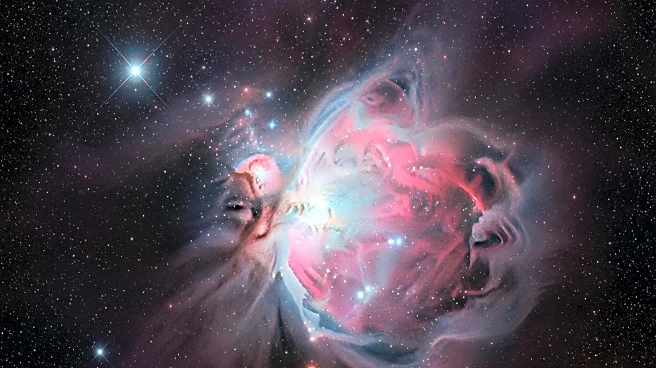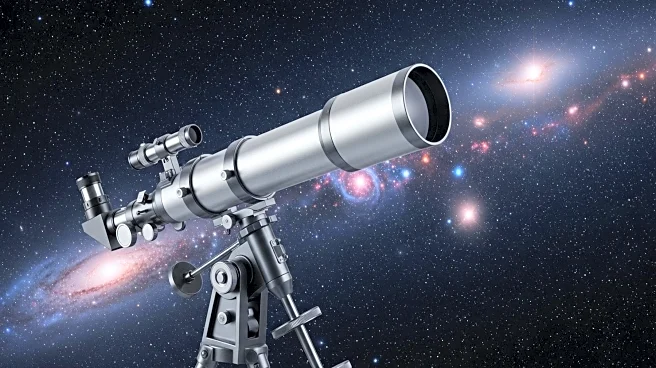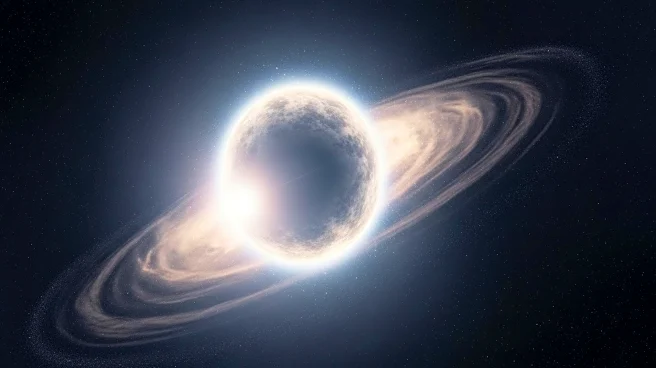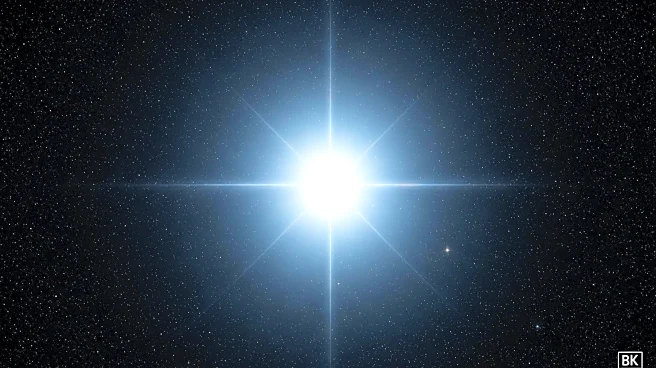What is the story about?
What's Happening?
Astronomers have released a new image of the binary star system Eta Carinae's full spectrum, captured using the SOAR Telescope Echelle Spectrograph (STELES) in Chile's Atacama Desert. This image provides fresh insights into one of the galaxy's most massive and volatile star systems. Eta Carinae, located approximately 7,500 light-years away in the constellation Carina, consists of at least two massive stars in a highly eccentric orbit. The system is known for its unusual activity, including the 'Great Eruption' in the 1840s when it became the second-brightest star in the night sky before fading and surrounding itself with gas and dust. The new spectrum image allows astronomers to study atomic and molecular features in stellar atmospheres, measure changes in Doppler shifts, and examine the physical condition of distant objects.
Why It's Important?
The study of Eta Carinae is significant for astronomers due to its instability and potential to explode as a supernova. Understanding the chemical composition of the gas, measuring the velocities of expelled material, and tracking changes in the system over time can provide crucial insights into how massive stars evolve. This research contributes to the broader understanding of stellar evolution and the lifecycle of massive stars, which are key components in the formation of elements and the dynamics of galaxies. The data obtained from instruments like STELES can help predict future behavior of similar star systems and enhance knowledge about the universe's structure.
What's Next?
Continued observation and analysis of Eta Carinae using advanced spectrographic tools like STELES will likely yield further discoveries about the star system's behavior and evolution. Astronomers may focus on understanding the causes of the 'Great Eruption' and the interactions between the two stars. These studies could lead to breakthroughs in predicting supernova events and understanding the role of massive stars in cosmic phenomena. The ongoing research may also inspire new technologies and methodologies for studying distant celestial objects.
Beyond the Headlines
The exploration of Eta Carinae touches on broader themes in astrophysics, such as the role of massive stars in the universe's lifecycle and the mysteries surrounding stellar eruptions. The study of such systems can influence theoretical models of star formation and death, potentially impacting our understanding of cosmic evolution. Additionally, the technological advancements in spectrography and telescope design may have applications beyond astronomy, including in fields like optics and materials science.
AI Generated Content
Do you find this article useful?
